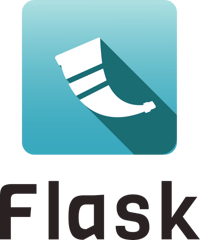博客蓝图¶
博客蓝图与验证蓝图所使用的技术一样。博客页面应当列出所有的帖子,允许已登录 用户创建帖子,并允许帖子作者修改和删除帖子。
在实现每个视图时,保持开发服务器运行。保存更改时,请尝试转到浏览器中的URL并进行测试。
蓝图¶
定义蓝图并在应用工厂中注册。
flaskr/blog.py¶from flask import (
Blueprint, flash, g, redirect, render_template, request, url_for
)
from werkzeug.exceptions import abort
from flaskr.auth import login_required
from flaskr.db import get_db
bp = Blueprint('blog', __name__)
使用app.register_blueprint() <Flask.register_blueprint>` 从工厂导入和注册蓝图。在返回应用程序之前,将新代码放在工厂函数的尾部。
flaskr/__init__.py¶def create_app():
app = ...
# existing code omitted
from . import blog
app.register_blueprint(blog.bp)
app.add_url_rule('/', endpoint='index')
return app
与验证蓝图不同,博客蓝图没有 url_prefix 。因此 index 视图会用于 / , create 会用于 /create ,以此类推。博客是 Flaskr 的主要 功能,因此把博客索引作为主索引是合理的。
但是,下文的 index 视图的端点会被定义为 blog.index 。一些验证视图 会指定向普通的 index 端点。 我们使用 app.add_url_rule() 关联端点名称 'index' 和 / URL ,这样 url_for('index') 或 url_for('blog.index') 都会有效,会生成同样的 / URL 。
在其他应用中,可能会在工厂中给博客蓝图一个 url_prefix 并定义一个独立的 index 视图,类似前文中的 hello 视图。在这种情况下 index 和 blog.index 的端点和 URL 会有所不同。
索引¶
索引将显示所有的帖子,最新的会排在最前面。使用一个``JOIN`` 让作者信息包含在``user`` 表中。
flaskr/blog.py¶@bp.route('/')
def index():
db = get_db()
posts = db.execute(
'SELECT p.id, title, body, created, author_id, username'
' FROM post p JOIN user u ON p.author_id = u.id'
' ORDER BY created DESC'
).fetchall()
return render_template('blog/index.html', posts=posts)
flaskr/templates/blog/index.html¶{% extends 'base.html' %}
{% block header %}
<h1>{% block title %}Posts{% endblock %}</h1>
{% if g.user %}
<a class="action" href="{{ url_for('blog.create') }}">New</a>
{% endif %}
{% endblock %}
{% block content %}
{% for post in posts %}
<article class="post">
<header>
<div>
<h1>{{ post['title'] }}</h1>
<div class="about">by {{ post['username'] }} on {{ post['created'].strftime('%Y-%m-%d') }}</div>
</div>
{% if g.user['id'] == post['author_id'] %}
<a class="action" href="{{ url_for('blog.update', id=post['id']) }}">Edit</a>
{% endif %}
</header>
<p class="body">{{ post['body'] }}</p>
</article>
{% if not loop.last %}
<hr>
{% endif %}
{% endfor %}
{% endblock %}
当用户登录后, header 块添加了一个指向 create 视图的连接。当用户是博客作者时,可以看到一个“ Edit ”连接,指向 update 视图。 loop.last 是一个 Jinja for 循环 内部可用的特殊变量,它用于在每个 博客帖子后面显示一条线来分隔帖子,最后一个帖子除外。
创建¶
Create 视图与 register 视图原理相同。要么显示表单,要么发送内容已通过验证且内容已加入数据库,或者显示一个出错信息。
先前写的 login_required 装饰器用在了博客视图中,这样用户必须登录以后才能访问这些视图,否则会被重定向到登录页面。
flaskr/blog.py¶@bp.route('/create', methods=('GET', 'POST'))
@login_required
def create():
if request.method == 'POST':
title = request.form['title']
body = request.form['body']
error = None
if not title:
error = 'Title is required.'
if error is not None:
flash(error)
else:
db = get_db()
db.execute(
'INSERT INTO post (title, body, author_id)'
' VALUES (?, ?, ?)',
(title, body, g.user['id'])
)
db.commit()
return redirect(url_for('blog.index'))
return render_template('blog/create.html')
flaskr/templates/blog/create.html¶{% extends 'base.html' %}
{% block header %}
<h1>{% block title %}New Post{% endblock %}</h1>
{% endblock %}
{% block content %}
<form method="post">
<label for="title">Title</label>
<input name="title" id="title" value="{{ request.form['title'] }}" required>
<label for="body">Body</label>
<textarea name="body" id="body">{{ request.form['body'] }}</textarea>
<input type="submit" value="Save">
</form>
{% endblock %}
更新¶
Update 和 delete 视图都需要通过 id 来获取一个 post ,并且检查作者与登录用户是否一致。为避免重复代码,可以写一个函数来获取 post, 并在每个视图中调用它。
flaskr/blog.py¶def get_post(id, check_author=True):
post = get_db().execute(
'SELECT p.id, title, body, created, author_id, username'
' FROM post p JOIN user u ON p.author_id = u.id'
' WHERE p.id = ?',
(id,)
).fetchone()
if post is None:
abort(404, f"Post id {id} doesn't exist.")
if check_author and post['author_id'] != g.user['id']:
abort(403)
return post
abort() 会引发一个特殊的异常,返回一个 HTTP 状态码。它有一个可选参数, 用于显示出错信息,若不使用该参数则返回缺省出错信息。 404 表示“未找到”,403 代表“禁止访问”。( 401 表示“未授权”,但是我们重定向到登录页面来代替返回这个状态码)
Check_author 参数的作用是函数可以用于在不检查作者的情况下获取一个 post 。这主要用于显示一个独立的帖子页面的情况,因为这时用户是谁没有关系, 用户不会修改帖子。
flaskr/blog.py¶@bp.route('/<int:id>/update', methods=('GET', 'POST'))
@login_required
def update(id):
post = get_post(id)
if request.method == 'POST':
title = request.form['title']
body = request.form['body']
error = None
if not title:
error = 'Title is required.'
if error is not None:
flash(error)
else:
db = get_db()
db.execute(
'UPDATE post SET title = ?, body = ?'
' WHERE id = ?',
(title, body, id)
)
db.commit()
return redirect(url_for('blog.index'))
return render_template('blog/update.html', post=post)
迄今为止和所有以前的视图不同,update 函数有一个 id 参数。该参数对应路由中 的 <int:id> 。一个真正的URL 类似 /1/update 。Flask 会捕捉到 URL 中的 1,确保其为一个 int ,并将其作为 id 参数传递给视图。如果没有指定 int: 而是仅仅写了 <id> ,那么将会传递一个字符串。 要生成一个指向更新页面的 URL,需要传递 id 参数给 url_for():url_for('blog.update', id=post['id']) 。前文的 index.html 文件中同样如此。
Create 和 update 视图看上去是相似的。 主要的不同之处在于 update 视图使用了一个 post 对象和一个 UPDATE 查询代替了一个 INSERT 查询。作为一个明智的重构者,可以使用一个视图和一个模板来同时完成这两项工作。但是作为一个初学者,把它们分别处理要清晰一些。
flaskr/templates/blog/update.html¶{% extends 'base.html' %}
{% block header %}
<h1>{% block title %}Edit "{{ post['title'] }}"{% endblock %}</h1>
{% endblock %}
{% block content %}
<form method="post">
<label for="title">Title</label>
<input name="title" id="title"
value="{{ request.form['title'] or post['title'] }}" required>
<label for="body">Body</label>
<textarea name="body" id="body">{{ request.form['body'] or post['body'] }}</textarea>
<input type="submit" value="Save">
</form>
<hr>
<form action="{{ url_for('blog.delete', id=post['id']) }}" method="post">
<input class="danger" type="submit" value="Delete" onclick="return confirm('Are you sure?');">
</form>
{% endblock %}
此模板有两个表单。第一个将编辑后的数据发布到当前页( /<id>/update ),另一个表单只包含一个按钮并指定 action 属性发布到删除视图。该按钮使用一些javascript在提交之前显示确认对话框。
参数``{{{{ request.form['title'] or post['title'] }}}}`` 用于选择表单中显示的数据。未提交表格时,显示原 post 数据,但如果发布了无效的表单数据,然后需要显示这些非法数据以便于用户修改时,就显示 request.form 中的数据。request 是又一个自动在模板中可用的变量。
删除¶
删除视图没有自己的模板,删除按钮已包含于 update.html 之中,该按钮指向 /<id>/delete URL 。既然没有模板,该视图只处理 POST方法并重定向到 index 视图。
flaskr/blog.py¶@bp.route('/<int:id>/delete', methods=('POST',))
@login_required
def delete(id):
get_post(id)
db = get_db()
db.execute('DELETE FROM post WHERE id = ?', (id,))
db.commit()
return redirect(url_for('blog.index'))
恭喜你,你的应用已经写完了!花点时间在浏览器中试试这个应用吧。然而,构建一个完整的应用还有一些工作要做。
下面请阅读 项目可安装化 。
